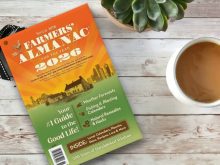As usual, this map gives only a very general indication of the soil moisture situation on the Canadian Prairies as we went into freeze up November 2016. It can be summed up in a word WET.
To make a soil moisture map it is essential that a good database of rain records from many stations is available. The more stations, the better the map. Rain cannot be modelled. Rain is not a prediction — it is a measurement. Pretty coloured, computer generated rainfall maps from too few stations are of little value.
Read Also

Claas brings 1000 Series SP forage harvesters to Canada
In mid-August, Claas unveiled its new line of Jaguar forage harvesters at an event in Visalia, California, deep in the heart of that state’s dairy region.
This map is made using the following information and data:
- The Alberta Ag website has excellent rain and other weather records based on a very large network of provincial weather stations. And, the data is very easily accessible even by this digitally challenged old fossil. Many thanks to the kids that are keepers of the keys for that Alberta website.
They also produce a soil moisture map based on modelling of water use and rain. The legend from that map is converted to the legend you see on this map. - The federal government’s drought watch site (www.agr.gc.ca/drought) produces rainfall maps for the three Prairie provinces on a weekly basis and cumulative maps are available for the growing season. For both Alberta and Manitoba there is a large provincial weather station base that is fed into the federal system. No such data exists for Saskatchewan so the rain maps there are based on too few stations.
- For Saskatchewan, rain data is extracted from the weekly crop reports produced by Saskatchewan Ag. Each weekly report has a rainfall map for that week and a cumulative rain record. The rain records are from about 200 RM reporters that provide the data.
- For Manitoba I use the federal site. In past years I have accessed the daily rain records from the Manitoba Ag website, but that data seems to have disappeared. I hope that is only temporary.
The past few years have seen few changes in most of west central and northwest Saskatchewan and eastern and southern Alberta. Those areas have been on the dry side and squeaking through with just enough rain to give a decent crop. That all changed this year with ample rains in most areas.
No very dry areas
This is the first year that I remember not getting the red pencil out of the case. No “Very Dry” areas were mapped this year.
A few years ago I added the “Very Wet” category to show those areas that had excess rain and potential water table rise. This year I have mapped three small areas in Saskatchewan and an area in southeast Manitoba in the “Very Wet” category based on seasonal rainfall greater than two feet (600 mm).
If the natural water table is 10+ metres below ground excess rain may not result in high water table. A good test of water table depth is the presence of shallow bored wells. If an area has (or had in past) shallow bored wells then excess rain will raise the water table. On my Dundurn farm I have installed shallow wells to monitor the water table and now have a couple of years’ data I will show in a future column.
Most farms will start 2017 with a good reserve of deep soil moisture. Make sure the seed is in to the moisture and the crop will be just fine without much rain in May or June — if it does not get too hot.
I still look forward to the year when fancy technology comes along and lets me retire my five coloured pencils . But, so far no takers.















